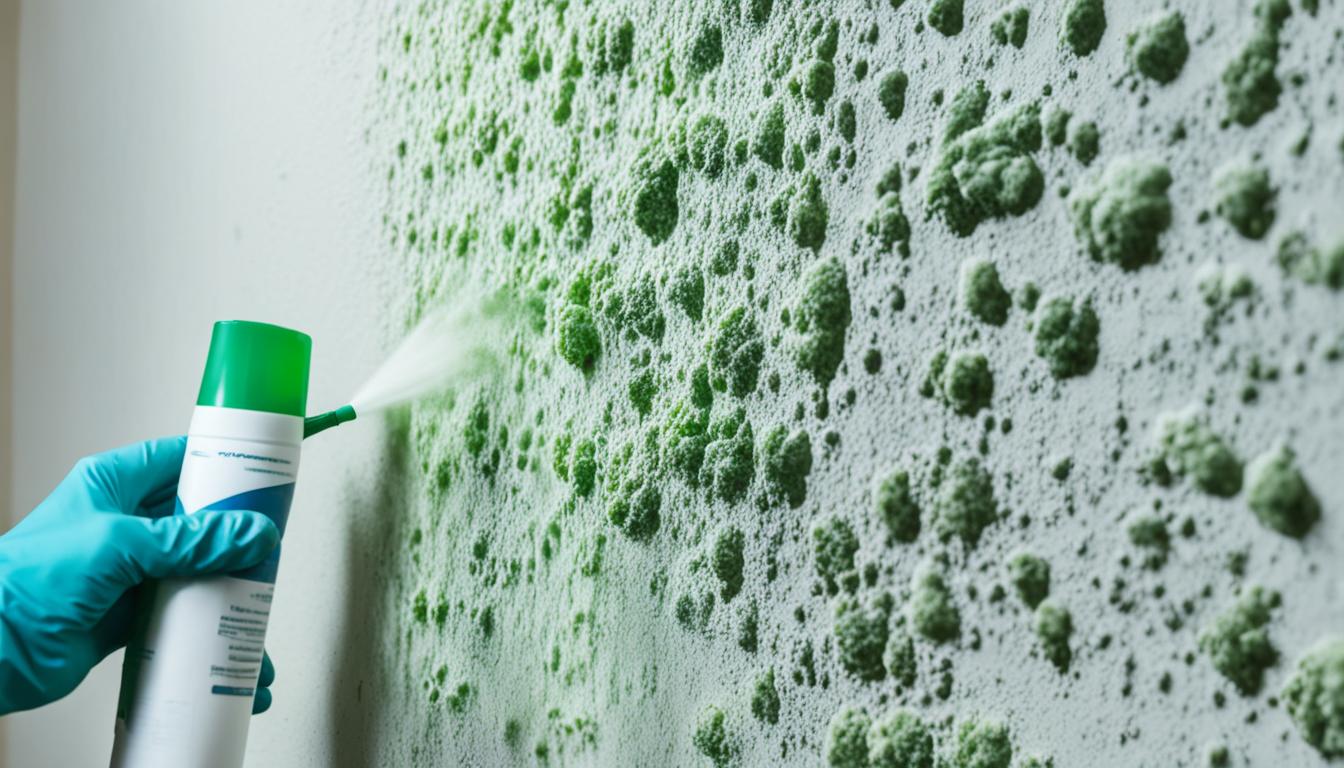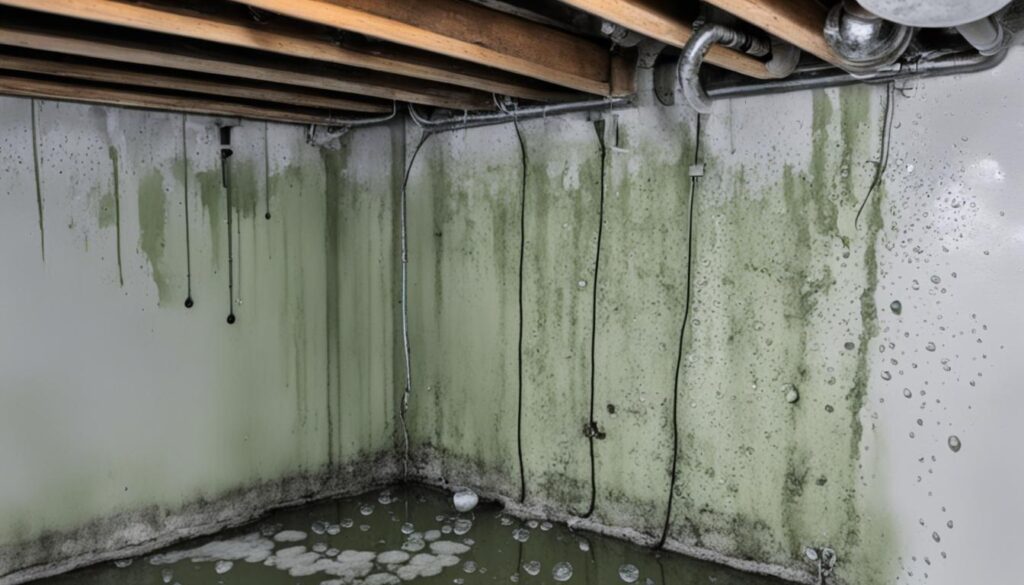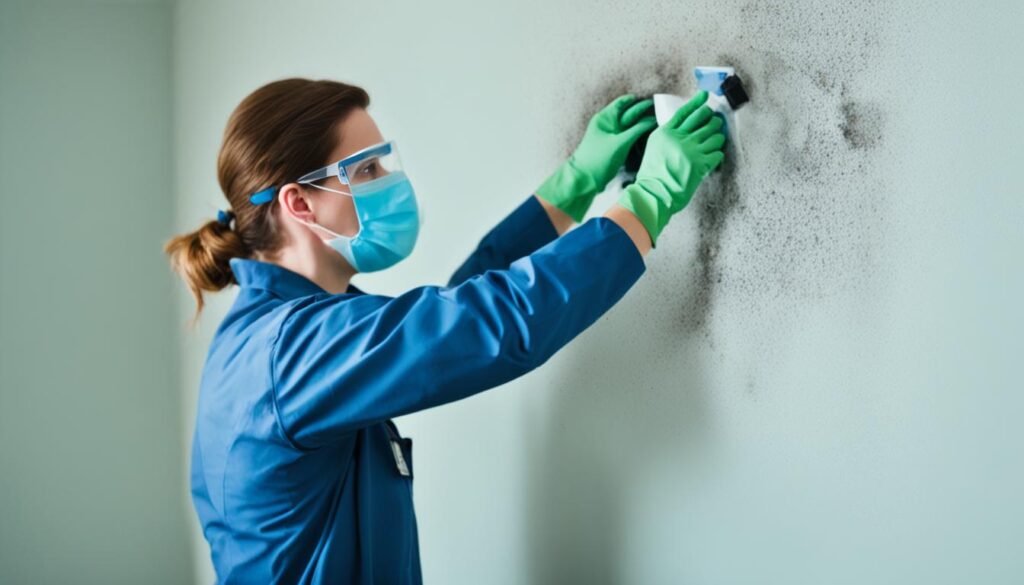
Effective Mold Removal: Your How-To Guide
Welcome to our comprehensive guide on effective mold removal. Dealing with mold growth can be a frustrating and potentially hazardous problem for homeowners and business owners alike. In this guide, we will walk you through the step-by-step process of getting rid of mold in your property and provide you with expert strategies for a successful remediation.
Mold can thrive in damp and poorly ventilated spaces, posing health risks and causing damage to the structure of your property. Whether you’re dealing with a small patch of mold or a larger infestation, it’s crucial to address the problem promptly and effectively.
This guide will cover both do-it-yourself (DIY) techniques and professional mold removal services, providing you with the knowledge and resources to make an informed decision on the best course of action for your specific situation. Let’s dive in and learn how to effectively remove mold from your home or business.
Key Takeaways:
- Identify the underlying cause of mold growth, such as moisture problems or poor ventilation.
- Follow step-by-step instructions for DIY mold removal using natural remedies and recommended cleaning products.
- Consider hiring professional mold removal services for extensive or recurring mold issues.
- Ensure the safety of yourself and others by using proper protective gear and following safety guidelines during mold removal.
- Prevent future mold growth by addressing moisture-related issues and maintaining proper ventilation in your property.
Identifying and Addressing the Root Cause of Mold Growth
Mold growth can be a recurring problem if the root cause is not identified and addressed effectively. Understanding the primary causes of mold growth, such as moisture issues and poor ventilation, is crucial in preventing its occurrence. By tackling these underlying problems, you can create an environment that is inhospitable to mold and minimize future mold-related issues.
Moisture Problems: The Main Culprit
Moisture problems serve as the primary catalyst for mold growth. Excess moisture in the air or on surfaces creates the perfect breeding ground for mold spores to thrive. Common moisture issues include:
- Damp basements or crawl spaces
- Leaking pipes or plumbing fixtures
- Inadequate ventilation in bathrooms and kitchens
- Roof leaks
- Condensation on windows and walls
It is important to identify and address these moisture problems promptly to prevent mold growth. Regular inspections and maintenance can help detect and rectify potential sources of moisture before they escalate into mold issues.
Poor Ventilation: A Recipe for Mold Growth
Insufficient airflow and poor ventilation play a significant role in mold growth. Stagnant air promotes moisture accumulation and inhibits proper drying, creating an ideal environment for mold spores to colonize. Areas commonly affected by poor ventilation include:
- Bathrooms with inadequate exhaust fans
- Kitchens without proper ventilation systems
- Closets and storage areas with limited air circulation
Improving ventilation in these areas by installing exhaust fans, opening windows for fresh air circulation, and utilizing dehumidifiers can help mitigate mold growth.
“Proper ventilation is crucial in preventing moisture buildup and subsequent mold growth.” – Dr. Emily Harris, Environmental Specialist
Take Action to Prevent Mold Recurrence
To prevent the recurrence of mold growth, it is essential to address the root cause by effectively managing moisture problems and improving ventilation. By doing so, you can create an environment that is less favorable for mold development. Regular inspections, prompt repairs, and proactive maintenance are key to keeping mold at bay.

| Root Causes | Impact on Mold Growth |
|---|---|
| Moisture Problems | Facilitates mold growth |
| Poor Ventilation | Promotes mold colonization |
DIY Mold Remediation Techniques
When it comes to mold removal, taking matters into your own hands can be a cost-effective and empowering solution. DIY mold removal allows you to tackle the problem head-on, using natural remedies and cleaning products to restore a healthy environment in your home or business.
Natural mold remedies offer an eco-friendly alternative to harsh chemicals, providing effective results without compromising your health or the environment. Two commonly used natural remedies for mold removal are vinegar and hydrogen peroxide.
Vinegar, a household staple, is a powerful tool in your mold-fighting arsenal. Its acidic properties make it effective at killing mold spores and preventing regrowth. Simply fill a spray bottle with undiluted vinegar and apply it to the mold-infested areas. Let it sit for an hour, then scrub the surface with a brush and rinse with water. Repeat the process if necessary.
Hydrogen peroxide is another natural remedy that can effectively eliminate mold. It has strong antifungal properties and can penetrate porous surfaces like wood and drywall. Fill a spray bottle with 3% hydrogen peroxide and spray it onto the moldy surface. Allow it to sit for 10 minutes before scrubbing away the mold and rinsing the area with water.
In addition to natural remedies, there are also various cleaning products specifically formulated for mold removal. These products often contain powerful fungicides and disinfectants designed to kill mold and prevent its recurrence. When choosing a cleaning product, look for one that is EPA-approved and labeled for use on mold. Follow the instructions provided on the product label for the best results.
It’s important to note that when conducting DIY mold removal, safety should always be a top priority. Follow these safety considerations:
- Wear gloves, goggles, and a mask to protect yourself from mold spores and cleaning chemicals.
- Ensure the area is well-ventilated by opening windows and using fans.
- Isolate the affected area to prevent the spread of mold spores to other parts of your home or business.
| DIY Mold Remediation Techniques: | Natural Remedies | Cleaning Products |
|---|---|---|
| Kill mold spores | Vinegar, hydrogen peroxide | EPA-approved mold cleaners |
| Prevent regrowth | Vinegar | EPA-approved mold cleaners |
| Penetrate porous surfaces | Hydrogen peroxide | EPA-approved mold cleaners |
By following these DIY mold remediation techniques and taking proper safety precautions, you can effectively remove mold from your home or business without the need for professional assistance. Remember to monitor your indoor humidity levels, fix any moisture issues, and maintain proper ventilation to prevent future mold growth.

Professional Mold Removal Services
When faced with a mold infestation, it is crucial to address the issue promptly and effectively. While DIY techniques may seem tempting, hiring professional mold remediation services offers numerous advantages. Professional mold removal experts have the knowledge, experience, and specialized equipment required to tackle even the most severe mold problems.
Certified mold specialists play a vital role in ensuring thorough and safe mold remediation. These professionals have undergone rigorous training and certification programs to acquire in-depth knowledge of mold growth, identification, and elimination. By entrusting your mold removal needs to certified specialists, you can have peace of mind knowing that the job will be done right the first time.
One key advantage of professional mold remediation is the comprehensive assessment process. Certified specialists conduct a thorough inspection of the affected areas, identifying the extent of the mold growth and the underlying causes. This professional assessment enables them to develop a customized remediation plan tailored to your specific needs, ensuring the complete removal of mold and preventing future recurrences.
When it comes to your health and the well-being of your property, professional mold remediation is an investment worth considering. By hiring experts in the field, you can mitigate the risks associated with mold exposure and protect the structural integrity of your home or business. To find reputable mold removal companies, consider seeking recommendations from friends, family, or trusted online reviews. Always verify their certifications and licenses to ensure you are working with qualified professionals.




